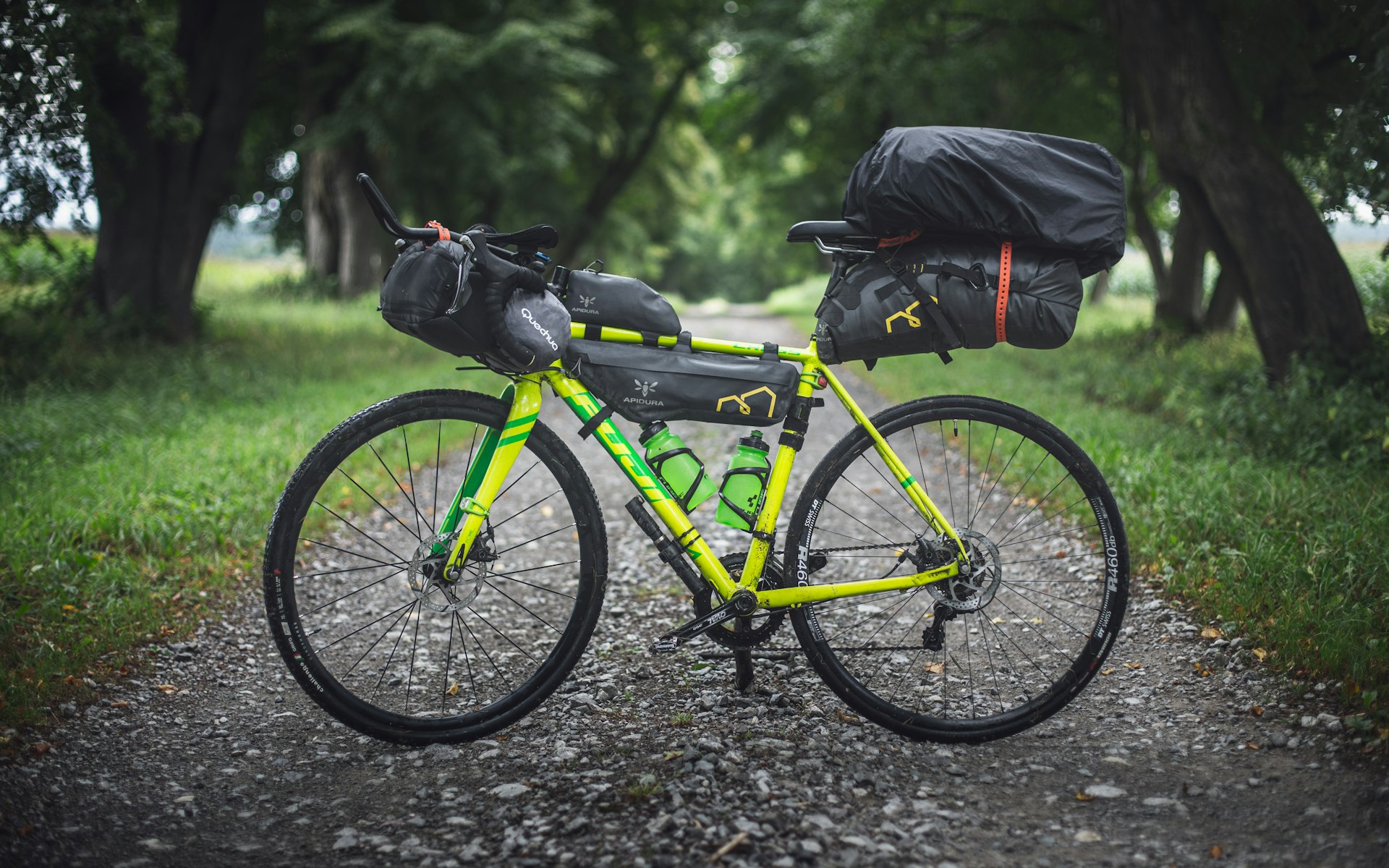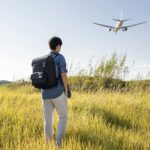Your Complete Guide to Essential Cycling and Adventure Travel Gear


Photo by Marek Piwnicki on Unsplash
Introduction: The Importance of the Right Gear for Cycling and Adventure Travel
Preparation is key for any successful cycling or adventure travel experience. The right gear not only boosts your comfort and safety but can also make the difference between a memorable journey and a challenging ordeal. This comprehensive guide delivers actionable, expert-backed advice for assembling your essential gear, supported by verified sources and real-world examples. Whether you are a beginner planning your first bike tour or a seasoned traveler gearing up for a multi-week expedition, the following sections will help you make informed choices, maximize efficiency, and stay prepared for any adventure.
1. Core Cycling Gear Essentials
Before embarking on any cycling adventure, it’s crucial to assemble a foundation of reliable gear. Your choice of bicycle is fundamental, but it does not have to be top-of-the-line; any bike in good working order with at least 10 gears, robust brakes, and provisions for mounting a rack will suffice for most tours. Many experienced cyclists recommend adapting your route to the capabilities of your bicycle, especially if you are using a non-specialized bike [5] .
Helmets are non-negotiable for safety. Look for one that is comfortable and certified to meet current safety standards. Padded bike shorts, a quality wind- or rain-proof outer layer, and cycling gloves are essential for minimizing discomfort and maximizing performance. Consider investing in a lightweight, packable rain jacket, waterproof gloves, and a warm hat that fits under your helmet to handle changing weather conditions [1] .
Proper footwear is also vital. Sturdy, grippy, closed-toe shoes are ideal for both riding and short hikes. Some riders opt for cycling-specific shoes, while others use low-profile hiking shoes for versatility [3] . Socks should be chosen based on climate-thin in summer, insulated for cold trips [4] . Sunglasses protect your eyes from UV rays and debris.
2. Clothing Systems: Layering for Comfort and Versatility
Effective clothing strategies are built on layering. A combination of technical baselayers (such as merino wool or synthetic blends), a warm midlayer (fleece or synthetic insulated jacket), and a weatherproof shell provides flexibility in fluctuating conditions. For many, two to three sets of cycling clothes suffice, with one set of off-bike clothes for camp and leisure. Many cyclists find that everyday hiking or backpacking clothing can substitute for cycling-specific apparel, offering both comfort and versatility [3] .
Rain gear is essential for both on- and off-bike activities. A technical rain jacket and waterproof pants, gloves, socks, and shoe covers can help you stay dry and warm, which is critical for safety in cold, wet conditions [2] . For sleeping, lightweight, stretchy pants and a long- or short-sleeve T-shirt are comfortable and can also serve as backup layers on chilly days.
When packing, consider using compression sacks to reduce clothing volume and keep your gear organized. Remember, overpacking is a common mistake-prioritize multi-use items and keep your load manageable [4] .
3. Hydration, Nutrition, and Health Essentials
Staying hydrated and fueled is crucial. Use a bottle that both purifies and stores water, such as those designed to fit standard bike cages. Carry energy gels or snacks to maintain energy levels on the go, and bring sunblock to protect your skin. A small first aid kit should contain basics for treating minor injuries. Chamois cream is highly recommended to prevent chafing and saddle sores, especially on long rides [1] .
For longer trips, plan your food and water resupply points in advance. Many cyclists use a combination of local supermarkets and outdoor shops to restock along the route. In areas where clean water is not guaranteed, portable water filters or purification tablets serve as backups. If you have dietary restrictions, pack accordingly and research availability along your planned route.
4. Navigation and Communication Tools
Modern navigation relies heavily on smartphones equipped with GPS-enabled apps. A secure phone holder that attaches to your handlebars makes it easy to follow digital maps without stopping. Always download offline maps in case of poor reception. Carry a power bank to keep your devices charged, especially if you are traveling through remote regions.
For communication and safety, a mobile phone is indispensable. In some areas, consider a satellite messenger or personal locator beacon for emergencies. If you plan to use your phone for navigation, invest in a weatherproof case or pouch. Bring printed maps as a backup, and make sure someone knows your itinerary and expected check-in times.
5. Repair and Maintenance Gear
Even the best-prepared cyclist faces occasional mechanical issues. Pack a comprehensive repair kit with extra tubes, tire patches, a portable pump, tire levers, and a multi-tool. Some riders prefer mini floor pumps for easier inflation, while others opt for compact frame-mounted pumps [4] . Don’t forget a bike lock to secure your bike during stops. Choose a lock that balances security and weight, and always lock your bike in visible, well-trafficked areas.
Familiarize yourself with basic repairs before you leave: fixing a flat, adjusting brakes, and tightening bolts are essential skills. Many local bike shops and online resources offer instructional classes and videos. In remote areas, self-sufficiency is critical, so practice repairs at home with your actual gear.
6. Packing, Storage, and Organization Tips
Efficient packing minimizes stress and maximizes enjoyment. Use panniers, a handlebar bag, or a day pack to distribute weight evenly. Dry bags are useful for keeping electronics and clothing dry in wet conditions. Many cyclists use a small backpack for side excursions and carrying groceries while in town [4] .

Photo by Muhammad Masood on Unsplash
When packing, group similar items together: keep tools and repair kits accessible, store food and water where you can reach them quickly, and separate wet and dry clothing. Labeling bags or using color-coded sacks can speed up packing and unpacking. At the end of each day, repack your bags to maintain order and make morning departures smoother.
7. Safety, Visibility, and Night Riding
Visibility is a safety priority, especially when sharing roads with vehicles. Wear a high-visibility safety vest, and equip your bike with front and rear lights. Many high-quality lights are USB-rechargeable and offer multiple brightness modes. For night riding or low-light conditions, reflective tape or stickers on your bike and bags add an extra layer of safety.
Always follow local traffic laws and cycling best practices. Ride predictably, signal your intentions, and stay alert. In unfamiliar regions, research road conditions and potential hazards before setting out. For added peace of mind, consider registering your trip with a travel safety agency or sharing your itinerary with a trusted contact.
How to Access Cycling and Adventure Travel Gear
Gear can be sourced through local outdoor retailers, specialty bike shops, and trusted online vendors. Many well-known outdoor retailers such as REI, Decathlon, and local independent stores offer a wide selection of cycling and travel equipment. If you’re new to cycling, visiting a local shop allows you to get personalized advice and test gear for fit and comfort. For rentals, inquire with adventure travel operators or local bike shops, many of whom offer packages that include essentials.
For those with budget constraints, consider secondhand gear from community forums, reputable online marketplaces, or local cycling clubs. You may also find demo days or swap events where you can try or purchase lightly used equipment at reduced prices. If you need help finding local suppliers, search online using terms like “bike shop near me” or “outdoor gear store in [your city].”
Summary and Key Takeaways
Proper preparation and the right gear are the foundation of a safe and enjoyable cycling or adventure travel experience. Prioritize essentials-bike, helmet, clothing, hydration, navigation, repair tools-and customize your kit based on climate, trip length, and personal preferences. Seek advice from experienced travelers, practice using your gear before departure, and always plan for contingencies. With thoughtful preparation and the guidance provided above, you’ll be ready to embrace the freedom and thrill that cycling and adventure travel offer.
References
- [1] Macs Adventure (2023). Essential Gear to Pack on Your Next Bike Tour.
- [2] Adventure Cycling Association (2022). What Gear Do I Need for a Week-long Tour as a Newbie?
- [3] Tom’s Bike Trip (2023). Cycle Touring & Bikepacking Kit List.
- [4] CyclingAbout (2024). Bike Touring Gear List: Everything I Carry After 12 Years.
- [5] Adventure Cycling Association (2023). The Gear You Need to Get Started Bike Touring.






